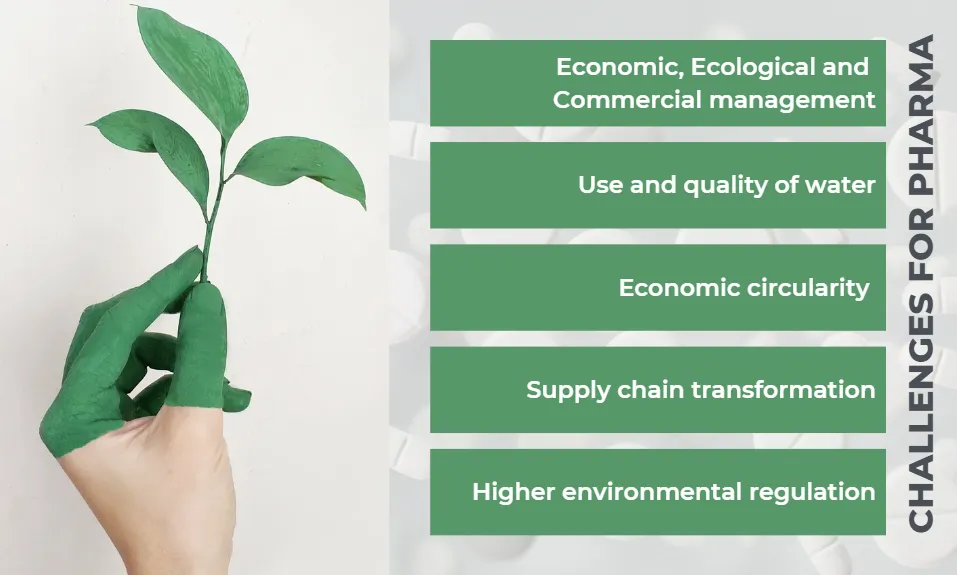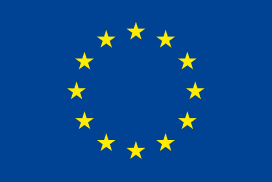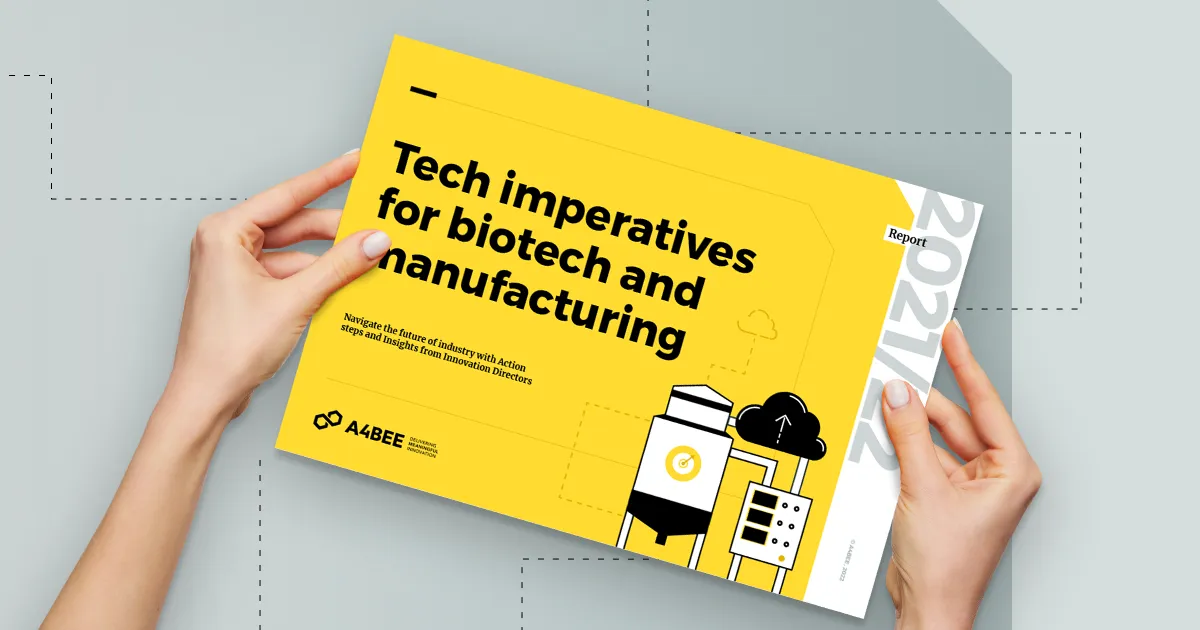15 min read

World Economic Forum shared recently that looking at today’s consumption levels, sustaining our current growth trajectory would require the ecological resources of 2.3 planets by 2050. This number is significantly higher for mature markets. The U.S., for example, would need five planets to sustain present-day consumption levels; Germany would need three. At A4BEE, we combine company social responsibility and sustainability needs with the path set by the company’s values and mission. Sustainable development goals have also been incorporated into the company’s strategy. This strategy is based on three pillars: People, Innovation, and Environment.
We care about everyone who surrounds us, starting with ourselves. It has been our pleasure to create new innovative solutions for #lifescience & #biotech since 2018. We are part of the world. We provide products that allow the efficient production of medicines. We conduct activities to promote health and a healthy lifestyle. We level the playing field for a healthy and dignified life through donations. We increase the efficiency of the use of natural resources in production. We care about the environment because our main resources come from nature. We use natural resources efficiently and promote eco-behavior. We promote the development, transfer, and dissemination of environmentally friendly technologies. We cooperate in exchanging knowledge, ideas, and experience in sustainable development.
The majority of our Clients are from the Biotech & BioPharma industry. Sustainability is part of our mission. And recently, I checked which approach our clients take to sustainability and #SDG.
Sustainable Business
The significance and use of pharmaceuticals are anticipated to rise as the global population is increasing and rapidly aging. As a result of new therapeutics production, we will experience effects on the ecology, climate change, and our well-being. This, in turn, would have a severe impact on people’s health. For the pharma market to be capable of planning and conducting such reactions, better awareness of these effects and also the interaction among people’s quality of life, the environment, and communities are necessary.
Utilizing the United Nations 2030 Agenda for Sustainable Development as a guideline, everyone can contribute to global well-being and peace. The 17 Sustainable Development Goals (SDGs), an essential need for action by all nations and organizations in an international partnership, are at the foundation of it.
The pharmaceutical sector aims to contribute to a sustainable ecosystem and show initiative in implementing the appropriate steps to mitigate environmental issues because it focuses on improving people’s daily lives. Taking into account the co-dependence of health and development, the SDGs represent an ambitious agenda for people, the planet, and prosperity and for ending the inequalities that underlie poor health and development outcomes.
Good Health and Well Being
Promoting health and well-being is one of the 17 Global Goals that make up the 2030 Agenda for Sustainable Development. Goal #3 seeks to ensure health and well-being for all, including a bold promise to end the epidemics of AIDS, tuberculosis, malaria, and other infectious diseases by 2030. The overarching goal is to achieve universal health coverage and ensure access to safe and effective medicines and vaccines for all. Fostering vaccine research and development is an essential part of this process, as is expanding access to affordable medicines.
More than 2 billion people worldwide still lack access to basic medicines, according to a report by the U.N. Secretary-General. It is the responsibility of pharmaceutical companies to help people get access to the quality drugs they need, no matter where they live in the world or how much they can afford.
Flexible Pricing
In order to cure more patients, it is necessary to price medicines transparently and responsibly. Flexibility in differentiating prices, taking into account country-specific social and economic circumstances, will help expand access to quality medicines.
Drug Production Democratization
According to the Antimicrobial Resistance Fighter Coalition, an estimated 700,000 people die worldwide each year due to drug resistance in diseases such as bacterial infections, malaria, HIV/AIDS, and tuberculosis. If we don’t take action, up to 10 million people could be dying annually from drug-resistant infections by 2050.
Access to Medicine Foundation has developed the Access to Medicine Index. It measures the contribution of leading pharmaceutical companies to improve the availability of medicines globally. There is increasing evidence that pharmaceutical companies are taking strong steps to make medicines more accessible to people in emerging markets. GlaxoSmithKline Consumer Healthcare, L.P. is at the top of the list for the fifth year in a row.
The lack of access to affordable drugs applies to new, expensive drugs, including precision therapies. The value and sales of cancer drugs more than doubled in European Union between 2008 and 2018, and there are longer delays for new drugs between launching in developed markets and obtaining access in developing markets. There are noticeable inequalities between countries within Europe itself: patients in northern and western European countries wait between two and six months for regular access to newly approved drugs, while patients in Eastern Europe typically have to wait between fourteen months and two years.
Principles of Sustainable Pharma
- Enviroment and its effects, Bengin by design,
- Healthcare requirements,
- Ecological Biochemistry,
- Automation,
- Source of disease,
- Concept of hazard and it’s outcomes,
- Assisting biomarkets and analytics for target therapy,
- Budget friendly,
- Procedure for rapid discovery,
- Sustainable development and experiments
Even though the aspect of sustainability is debatable, numerous essential principles cannot be ignored. To describe it simply, sustainability is the goal of a livelihood for all people within the parameters of the environment. In addition, this idea’s so-called “social” structure provides a place for social argument regarding the decisions that must be implemented to accomplish this mission. Experts have investigated a variety of important principles for Sustainable Pharma. Those consisting of:
- The environment and its effects (benign-by-design): Inventing pharmaceutical research approaches that are secure and efficient, all the while minimizing negative impacts on the environment. The impact of pharmaceutical development, research, economic transmission, and therapeutic utilization must be kept in mind because otherwise, it will be transmitted to subsequent generations. It involves developing innovative pharmaceuticals using sustainable materials in a sustainable approach, such as by using cell cultures technology instead of the actual botanical. Using the trash from one procedure as a preliminary step with another element of benign-by-design. By eliminating waste and duplication, pharma industries can decrease the number of resources they spend. Innovative tags and augmented reality instructions on how to utilize pharmaceuticals or drug therapy may substitute for printed components and guides. Implementing technology to perform fair and equitable supply chain systems can optimize the cold chain. Plastics formed from sugarcane or corn, for instance, break completely in approximately ten years, allowing them to be used in product packaging rather than non-biodegradable plastics.
- Health care requirements: Upcycled and inventive pharmaceuticals should emphasize unsatisfied or neglected medication regimes instead of only drug companies’ bottom lines.
- Ecological biochemistry: To reduce environmental contamination, and carbon pollution, as well as the exploitation of non-renewable materials, inorganic chemicals must be manufactured and evaluated utilizing green synthesis processes. Thus, biotech and computer-aided configuration are enabling researchers by aiding in the determination and isolation of particular chemical syntheses.
- Automation: By enabling the estimation of numerous variables that currently require being checked in vivo, the application of artificial intelligence (A.I.) and Big Data could expedite and boost the effectiveness of pharmaceutical research. Chemically synthesized methods can sometimes be automated and multiplexed for upgraded consistency at reduced energy consumption and, consequently, cheaper costs, along with a wider spectrum of inquiry.
- The source of the disease: However, the utilization of biomarkers and bioinformatics to guide patient-specific therapies can assist in lowering the consumption of pharmaceuticals that is not even necessary and therefore alleviate all individuals and the environment of a huge amount of pressure. The example taken must be identified to use both genetic and metabolomic indicators that predict the risk of the disease.
- Concepts of hazard and outcome: Another important area of current research that could ultimately lead to much more environmental sustainability in pharmacy is the search for medications that address the actual condition rather than merely its indications. In addition to lowering dosage and side effects, this may also inhibit the growth of drug resistance.
- Assisting biomarkers and analytics for targeted therapy: By identifying mechanisms of action and enabling an initial evaluation, computational modeling can also assist in lowering the inherent risk in drug discovery procedures.
- Budget-friendly: Such information can also be utilized economically and environmentally, allowing a more inclusive and accessible therapeutic efficacy with much more appropriate costing and issues.
- Procedure for rapid discovery: The development of an efficient and sustainable method that takes into consideration the life span can be accomplished with the assistance of proper regulation of sustainable pharma, which may also help to prevent using fewer effective experimental strategies and spending on the less valuable areas.
- Sustainable development and experiments: Developing ethical research that benefits society and the industry, in general, is important, also. The government plays an important role in encouraging and enabling development while trying to make sure that the public profits from certain initiatives.
Key challenges for pharma in the context of sustainability

- Economical, Ecological, and Commercial management — increased expectations of responsibility from stockholders. It is necessary to provide more information and incentive to work with organizations and generic pharmaceutical makers.
- Use and quality of water — using less fresh water and paying closer attention to hazardous and active effluents. 80% of the world’s wastewater is discharged untreated into the environment. Higher concentrations of pharmaceuticals detected in rivers are examples of poor sanitation. It will amplify societal and environmental stress where climate-induced reductions in water flow are predicted. Rapidly growing urban centers with inadequate water treatment works will need to prioritize water quality improvement before supply reductions become a reality.
- Economic circularity — cut back on waste and create greener, safer products. Humans generated 53.6M metric tons of e-waste ( old computers, phones, appliances, and other gadgets ) in 2019. 100B tonnes of material are consumed annually, and only 8.6% are recycled.
- Supply chain transformation — enhance procurement and track emissions by introducing more transparency. Carbon is a new currency: in early May 2021, it traded at about €50 per metric ton on the E.U. Emissions Trading System. Schneider Electric launched the Energize program to increase the pharmaceutical industry’s access to renewable energy. Through Energize, drugmakers will be given the opportunity to access and contract for renewable energy throughout their value chain. Ten global pharma companies signed up to promote the initiative and encourage their suppliers to decarbonize with renewables: AstraZeneca, Biogen, GSK, Johnson & Johnson (J&J), MSD, Novartis, Pfizer, Novo Nordisk, Sanofi, and Takeda.
- Higher environmental regulation — regulatory implementation will continue rising; hence the healthcare sector should be prepared to interact with auditors effectively.
Environmental, Social, and Corporate Governance officers will be tasked centrally with implementing strategies and partnering with leaders to drive change within the organization.
Companies need to communicate the effects of higher-order collaboration derived from individual actions to ensure that this occurs on time. This requires strong vision and leadership as well as accountability from all employees across the entire value chain.
Examples of pharma companies addressing environmental sustainability goals
UCB
By installing a new energy-efficient heating and cooling system, the facility was able to cut its yearly natural gas usage by 3100 MWh and its CO2 emissions by 600 Tons (or 5% of the site’s CO2 emissions). By 2023, the site will be carbon neutral after a gradual phaseout of natural gas and its replacement with renewable biomethane.
LEO Pharma
LEO Pharma, a Danish pharmaceutical industry, has cut its CO2 emissions by 800 tons and energy use by 4.1 GWh, or the equivalent of 165 Danish families. The 10% usage reduction target for the end of 2020, considering 2013 as the baseline, is what generates the realized gains.
AstraZeneca
At its research and development facility in Sweden, pharmaceutical behemoth AstraZeneca has been able to cut down on gas use due to an initiative significantly. Energy efficiency has improved, and about 2,500 tons of CO2 have been saved annually. It is now transforming the remaining gas into biogas.
Pfizer
Pfizer built its first LEED-NC Platinum-certified pharmaceutical factory in the world in Dalian, China in 2017. Established in 1989, the factory in Dalian is Pfizer’s first production base in China. To maximize energy savings, the building collects wastewater and rainwater for watering the lawn and grounds, combined with high-efficiency equipment and LED and automated solar lighting systems.
Sanofi
With a saving of 22,000 tons of CO2, the pharmaceutical company Sanofi has reduced its refrigerant-related CO2 emissions by 40%. For instance, a single cold loop at -20° C using ammonia and CO2 was able to replace six chillers with natural fluids, boosting energy efficiency by 250%.
Amgen
In 2014, U.S. biotech Amgen opened a $200m biomanufacturing plant incorporating continuous purification methods in Singapore. Compared with a traditional manufacturing facility, Amgen’s plant produces 69% less carbon emissions — a promising figure for a company that plans to be carbon-neutral in its operations by 2027.
Lundbeck
Lundbeck is the first Danish company to have its CO2 reduction target approved by the Science Based Target initiative, a collaboration between the Carbon Disclosure Project (CDP), U.N. Global Compact (UNGC), World Resources Institute (WRI), and World Wide Fund for Nature (WWF).
For the 7th consecutive year, Lundbeck scored an “A” score and is placed amongst the 1.5% best-scored companies globally. Lundbeck has reduced energy consumption by 25% and has already cut more than 70% of our emissions from our sites.
Novartis
To purchase 100 megawatts (M.W.) of clean energy from a Texas wind farm, Novartis and Invenergy have inked a 12-year contract. Roughly the course of the contract, the project is anticipated to cut Novartis’ annual greenhouse gas emissions by over 220,000 metric tons.
The Janssen Pharmaceutical Companies of Johnson & Johnson
The largest energy consumer among all Johnson & Johnson locations worldwide is the Janssen Beerse plant in Belgium. Green and renewable energy sources called deep geothermal will be used to heat and cool the campus buildings starting in 2020. According to calculations, this would result in a 30% CO2 emission reduction.
Novo Nordisk
As a part of its strategy, Novo Nordisk runs many initiatives related to SDG Goal 3 on Health and Goal 12 on Responsible Consumption and Production.
Conclusion
Pharmaceutical markets are heavily influenced by government policies, including public investment in research, patent protection of products and intellectual property rights, regulation of market entry and production, and regulation of market prices by health systems that set the ground rules for coverage and reimbursement.
Environmental regulation usually regulates the outputs of water and air pollutants to minimize the harm that dangerous and pharmaceutically active compounds cause to the local environment. The issue’s complexity without a clearly defined set of simple answers is the biggest obstacle to sustainability in pharmaceutical development. Therefore, these solutions can be categorized as worse or better solutions but are hardly accurate or inaccurate.
Sustainability targets cover a wide landscape of domains, including well-being and education. It should be possible to comprehend the future of pharmaceuticals by merging the variety of synthetic, quantitative, bioinformatics, metabolomics, and pharmacokinetics expertise with commercial models which would address global challenges and the common good.
References
- Wynendaele, E. et al. (2021). Sustainability in Drug Discovery. Medicine in Drug Discovery. https://doi.org/10.1016/j.medidd.2021.100107. Available at: https://www.sciencedirect.com/science/article/pii/S2590098621000282
- https://sdgs.un.org/goals
- https://www.efpia.eu/media/554662/white-paper-climate-change.pdf
- https://www.iqvia.com/-/media/iqvia/pdfs/library/articles/environmental-sustainability-in-pharma-iqvia.pdf?_=1663259877138






